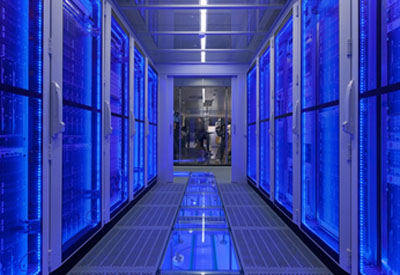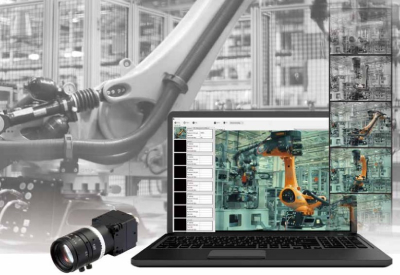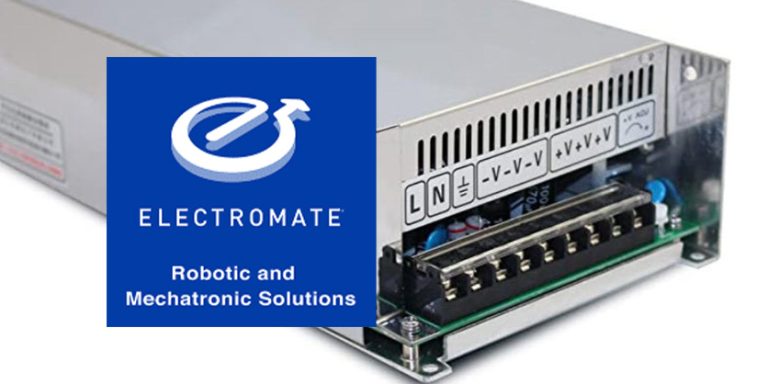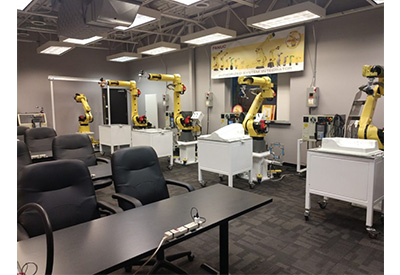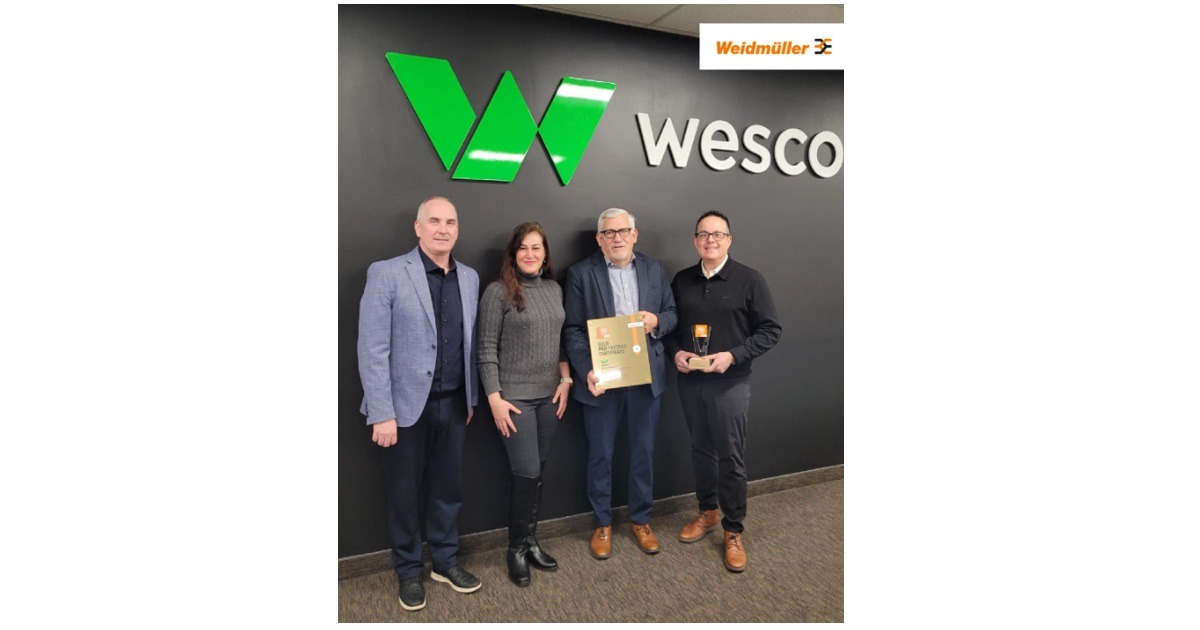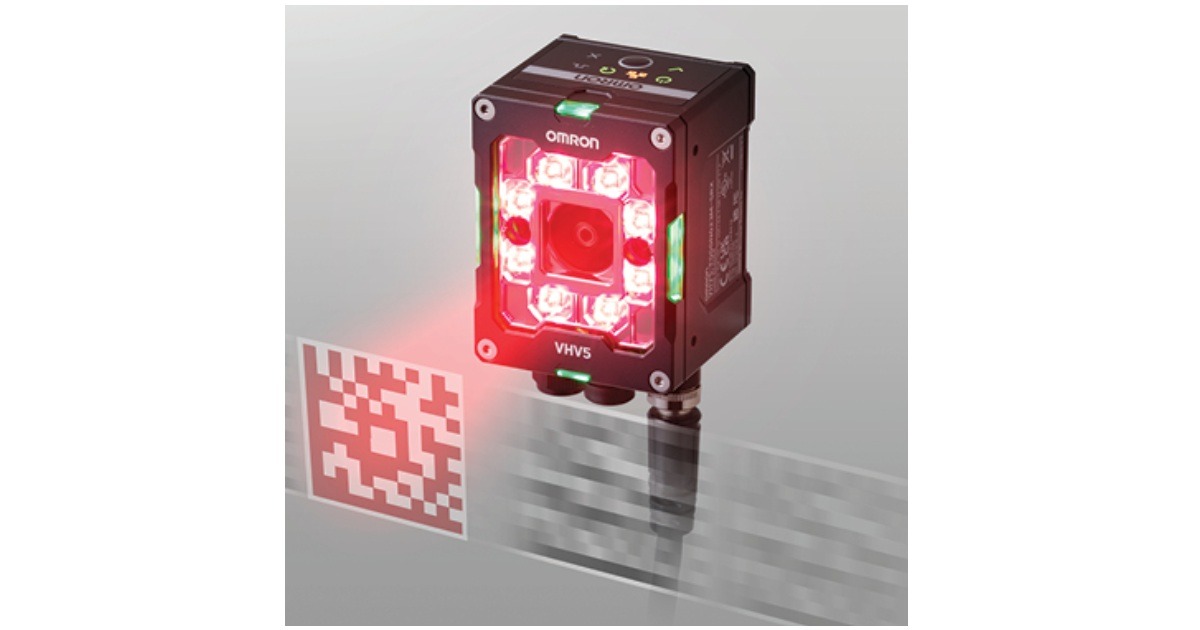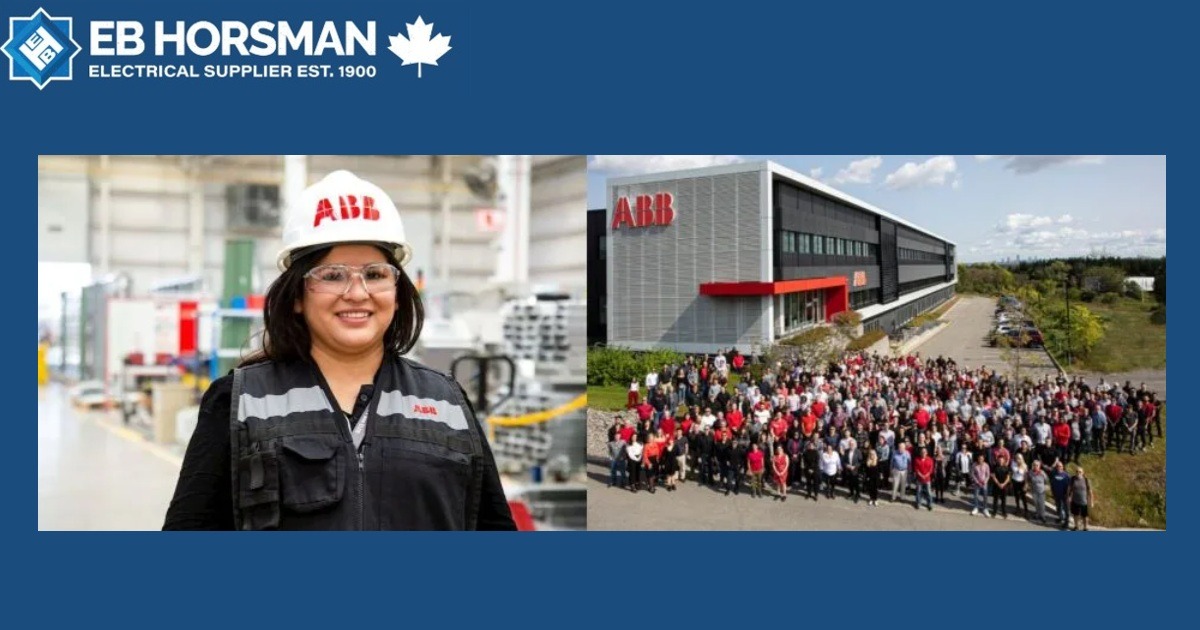How Robotic Automation Impacts E-Commerce
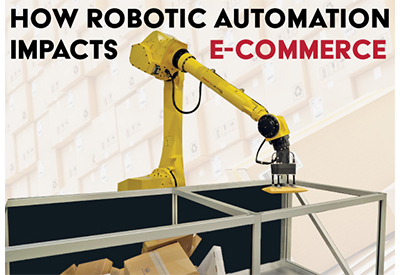
May 11, 2021
By Robert McElmurry, FANUC
As the pandemic created a “new normal” for how we live and work that no one could have imagined, the fulfillment and logistics industries experienced unprecedented growth. A key factor driving this market growth is omni-channel fulfillment. Increasingly, customer demand is driving retailers, suppliers and third-party logistics companies (3PLs) to develop capabilities to deliver product through multiple channels. While the state of e-commerce made steady advancements over the past decade, the unique situation brought on by COVID caused the fulfillment sector to evolve more rapidly. A year into the pandemic, suppliers are looking for the best methods to get product to their customers at the right place and time – no matter what order channel is used. This increased demand is due to a significant growth in e-commerce, and a quickly growing shortage of labor. As we examine various methods of fulfillment, it is clear that robotics are now considered necessary tools to help companies not only meet, but exceed their customers’ needs. Let’s find out why.
When system integrators first tackle an automation project for fulfillment, it is important to understand the distribution channel, and the specific application niche the robotic solution is designed to fill. This allows the integrator to better understand the type of product, packaging, volume, and upstream and downstream processes that are likely in place. These distribution channels are designed to get product to the customer in the right place, at the right time and through the customer’s preferred ordering channel.
- – Products in the Right Place – traditionally people shop at a store or order from the store’s website and receive the item at home or at their business. Companies are allowing an order through any channel, and the customer takes possession through a variety of methods including pickup in-store, delivery to a home or business, or receiving items at other locations like a locker consolidation point. Customers want choices regarding the places where they can receive purchased items.
- – Products at the Right Time – much of the investment in fulfillment technology over the last decade is driven by order cycle time. Order cycle time begins when a person orders a product and ends when they take delivery or pick it up. Before two-day shipping became the norm, this challenge required new technologies to get products to consumers within the timeframe offered. Customers are demanding shorter and shorter delivery windows, which retailers are trying to meet through increased omni-channel capabilities. So as an e-commerce business, it’s important to ask yourself, what order cycle time are we trying to achieve? For automation system integrators, the question is what order cycle time does my customer want to achieve? Order cycle time is going to dictate the type of network that will allow goods to be fulfilled on time, whether it’s two-day, one-day or even same day.
- – Products Purchased via any Order Channel – Increasingly, customers expect to be able to order online or buy in-store and assume that retailers have these distribution capabilities. The mix of order cycle time and delivery or pick-up preference means that retailers must pursue discrete strategies to achieve this capability. Items may come from a distribution center (DC), a fulfillment center (FC), through omni-channel fulfillment centers (OCF), a dark store (DC), a third-party logistics supplier facility (3PL), a warehouse or directly from a manufacturer. And, those items may be going to a residence, a store, a business or another supply-chain partner.
As order and delivery methods grow and change, more fulfillment companies are looking to implement intelligent automation solutions that accommodate customer order methods, and deliver products to the right place at the right time.
Product and Package Variability are Important
When developing solutions, product and packaging variabilities are key factors that will dictate the amount of flexibility needed. For example, the higher the variability in the overall number of SKU’s means more variability of package types. In addition, more seasonal products will increase SKU’s over time. In a robotic system, addressing flexibility needs may come in the form of flexible gripping technology, or machine learning and artificial intelligence technologies applied to these systems in order to handle the diversity in SKUs and packaging.
Working with the Right System Integrator
Just like any other industry, when it comes to automation it’s important to partner with a system integrator that has technical expertise, automation know-how and industry experience. In fulfillment applications, qualified integrators will work in partnership with their customer to understand cycle time goals, the purpose of the facility, how the automation will be used, and where products will go once they leave the facility. In addition, some customers may need to deal with customer returns – especially in the fashion industry where return rates are as much as 40%. Whatever the process requirements may be, a system integrator will be able to make recommendations and execute a solution that could include standard industrial robots, cobots, autonomous mobile robots, drones, or a combination of technologies.
Solving Labor Issues
Businesses in every industry are faced with the issue of trying to find and retain labor, and since the start of the pandemic, it’s been challenging to say the least for companies to keep up with the rapid growth of e-commerce. With the uncertainties brought on by COVID, companies have had to deal with more people calling in sick and staying out for two-week periods to quarantine. In addition, once the pandemic has subsided, companies will still need to maintain social distancing between operators. While not the remedy to address every industrial issue, robotics are ideal to assist workers, create at least six feet of space between each person, and help businesses meet growing customer demands. Given the current growth rates in e-commerce, demand for warehouse labor is expected to increase three to four times in the coming decade. Companies should act now to begin to address this challenge.
E-Commerce Growth
According to a parcel shipping index published by Pitney Bowes, there were 103 billion packages shipped globally in 2019, which equates to 3,250 packages per second. With the current growth rate, that number is likely to double by 2026. The shipment of any product is the final leg in its journey from production to delivery. Since parcels are handled many times before being delivered, there are a lot of opportunities for warehouse robotics, AS/RS, conveyors, and other new technologies, including the use of automation in stores – even if there’s a huge variance in the projected growth for parcel delivery.
In addition to parcel shipments – e-commerce as a percent of retail has shown consistent growth rates between 7-13% in the last decade – and as high as 16% in 2020. E-commerce is projected to continue to grow at a steady pace, even after the pandemic.
The untapped potential for robotics in e-commerce is significant, and FANUC, along with our team of system integrators are ready to help unlock that potential. We’re committed to providing automated solutions that will help companies achieve their goals for improved productivity and higher profits.
How are Robots Being Used in E-Commerce?
The market for robots in e-commerce is definitely in its infancy, but even so, there’s an increasing number of robots and other technologies that are now being used for a variety of fulfillment tasks, including:
Direct to customer e-commerce order
This is when a customer orders a product online and it goes to the fulfillment center, or omni-channel facility, then to the parcel network for delivery.
In this scenario, customers might use traditional robotic palletizing applications such as end-of-line, mixed-order or homogeneous. Think about when the goods come into a fulfillment or omni-channel center, and a portion of the center is allocated to direct customer orders that will be sent to customer-specified locations. It’s likely that the fulfillment center does not want to receive a whole pallet of goods, but would prefer a mixed order pallet with 5-10 items from of a particular SKU – this situation is definitely an opportunity for traditional palletizing.
In other instances, retailers may have issues with their existing brick and mortar stores that requires them to direct more goods through a different channel – this is another opportunity for traditional robotic palletizing. Whatever channel is used, there are many options when it comes to designing an automated distribution center with the help of robots.
On the inbound side, robots can be used for:
- – Unloading trucks for homogenous de-palletizing – bringing a homogenous pallet into the fulfillment center.
- – Heterogeneous de-palletizing – separating products and placing them into bins for storage.
- – Sortation induction — grabbing a good and putting it onto a conveyor sortation system.
- – De-canting — getting items out of a carton.
On the outbound side, robots can be used for:
- – Handling bins – grab an empty bin and move it to a conveyor.
- – Induction sortation – for items needing to go to an order consolidation point for building and packing an e-commerce order.
- – Each picking – most challenging when a customer orders four things and you need to build that particular order – advanced technologies like vision are required to process each order.
- – After pack out – potentially another opportunity for outbound sortation on the truck loading side.
When the order is going directly to a customer, it will first likely go into a parcel network. For these instances, there are several inbound opportunities for robots like truck unloading, induction sortation, and each picking as a general material handling application like box loading/unloading. On the outbound side robots could handle flat sortation, zip code sortation, and truck loading.
Understanding Technology Development
Because the market for robots is in its infancy in the various e-commerce segments, there are many companies working on new application development. For technology developers, there’s a huge opportunity to create products that fit the needs of customers in the market. There are also risks associated with doing the right things to meet customer needs. From an integrator’s standpoint you need to be careful who you work with, and make sure you pilot and demo the new technology before you implement it into the real world.
Currently, e-commerce includes picking, placing and other material handling processes, and it’s likely there will be many standardized applications in the near future. To mitigate risks, be sure to work closely with your customers and suppliers. With better understanding and communications, you’ll be able to identify ways to fit a robot or an entire automation cell into an existing system. As we move forward, there will be more opportunities to actually design for automation up front knowing there will likely be a robotic solution.
The Impact of Vision, AI & Machine Learning
AI and machine learning technologies are enabling new applications. In fact, most of the applications in ecommerce/fulfillment require some type of machine vision. However, with the huge proliferation of SKUs, the old way of programming for a particular part or object discretely is much more difficult to figure out what item to pick next. AI and machine learning will provide more opportunities for companies to expand their capabilities and help ease the burden of dealing with high levels of product variability.
Integrators with machine vision and/or AI experience are having the most success meeting their customers’ needs. It’s important to note that there are some limitations with AI – one is deep learning vs. machine learning using older machinery algorithms. Deep learning is relatively new within the last decade, and the idea is that the more data you have, the better the machine vision will perform. As a system runs, deep learning tries to figure out how to pick items on its own. As datasets improve, companies are achieving 99% pick rates in terms of object recognition, but there’s still a lot of room for improvement. There can be advantages to a traditional machine vision application in the sense that if something goes wrong you can fix it. In fact, some companies have developed their own technologies that work well. Whatever direction you take, it’s really a matter of using the technologies that deliver the best result.
From a vision standpoint, FANUC offers a wide range of integrated 2D and 3D vision products that are quick to install, easy to use and flexible – expert programming knowledge is not a requirement. For e-commerce applications such as de-palletizing and bin picking, FANUC’s iRVision 3D Area SensorRVision 3D Area Sensor can provide very quick and reliable part detection. Also, while FANUC’s iRVision is directly integrated into our robots, we can easily work with other machine vision products.
Automated Fulfillment for Grocery and Retail
For grocery stores and other retailers looking to establish a fulfillment solution, some of FANUC’s integrators have their own micro fulfillment solution, and we see opportunities for robots to assist in those facilities. Experienced integrators will work with these retail and grocery companies to help them better understand their options for an automated fulfillment system. It’s important to note that many workers in service industries are not as familiar with robotics as workers in manufacturing, so during the design phase, integrators should include an easy user interface and uncomplicated software.
The Importance of Training
Training is another requirement for success. Even with advanced systems offering 99% correct picks, there’s still a gap that will require human intervention to minimize downtime. Making sure that employees are certified to work with the automation is critical for their safety and the success of the system. It also elevates their career because some workers who previously handled the products are now trained to manage the automation.
Companies may consider training offered by FANUC or their system integrator, or working with a local technical school to create an apprenticeship program for their employees. FANUC’s apprenticeship programs aim to help companies rapidly upskill employees at every level from Operator to Technician to Integration System Specialist. In addition to improving the skills of current production workers, these programs will be extremely valuable for engineers who are working to implement new automation systems and processes that require new employees trained in the latest automation technologies.
Today’s environment is leading to rapid changes in the adoption of automation for fulfillment and logistics. This environment holds the promise of great opportunity for end-customers and integrators to meet the demands of the market.
FANUC and our team of system integrators have the people, products and experience to help you maximize the productivity of your warehousing/fulfillment/logistics process. If you’re considering automation, let’s start the conversation and find out how we may be able to help you find a better solution to achieve your goals, increase profits and maintain a competitive edge.

